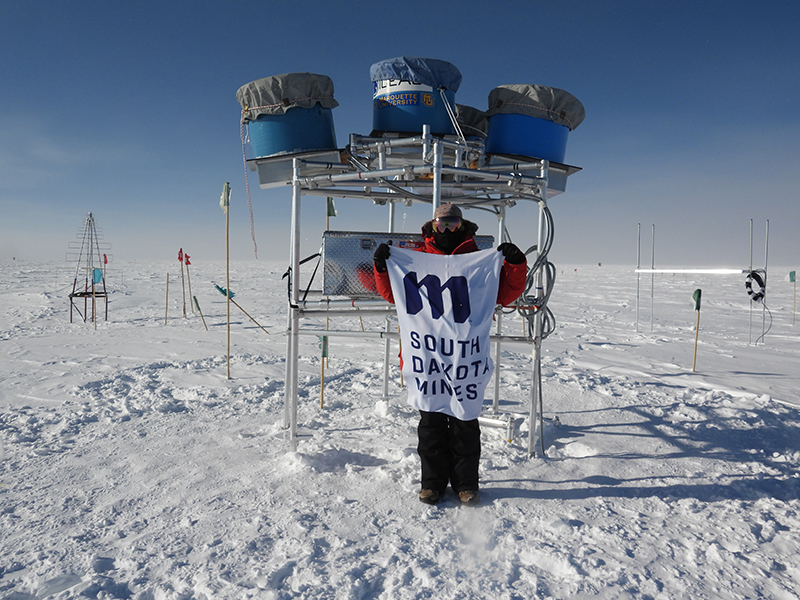Mines Professor Receives NSF CAREER Grant to Help Unravel Mysteries Surrounding Cosmic Rays

For more than a century, scientists have known the existence of cosmic rays, fast-moving particles showering the Earth from galaxies above.
These high-energy charged particles have long fascinated scientists who believe cosmic rays hold answers to understanding our universe.
Yet, even after more than 100 years of study, a full understanding of where these rays come from, how they gain energy and how they travel through space remains a mystery.
Matthias Plum, Ph.D., South Dakota Mines assistant professor of physics, is striving to uncover these details, and a recent $900,000 National Science Foundation CAREER Grant will help support his research.
The Faculty Early Career Development (CAREER) Program is a foundation-wide activity that offers the NSF’s most prestigious awards in support of early-career faculty who have the potential to serve as academic role models in research and education and to lead advances in the mission of their department or organization. Activities pursued by early-career faculty should build a firm foundation for a lifetime of leadership in integrating education and research.
“Unlike neutral particles, such as gamma rays or neutrinos, cosmic rays are affected by magnetic fields in galaxies,” Plum said. “This interaction complicates our ability to trace them back to their original sources.”
The NSF grant will expand Plum’s research and work with the IceCube Neutrino Observatory at the South Pole to examine extensive air showers when cosmic rays collide with the Earth’s atmosphere.
Mines is one of 58 institutions across 14 countries that form the IceCube Collaboration – an international team driving the research and mission at the IceCube Neutrino Observatory, the world’s largest neutrino observatory. Larissa Paul, research scientist in the Mines physics department, recently spent several months at the South Pole observatory installing four new telescopes to collect additional data for Plum’s research.
The “fly eye” telescopes simultaneously capture events in the atmosphere, on the surface and deep within the glacial ice to better determine the sources of cosmic rays. The research combines data from IceTop, IceAct and IceCube, the in-ice detector, to achieve the first enhanced measurement of cosmic-ray anisotropy in the southern hemisphere.
“The South Pole is the only place on Earth where you have enough clear ice that you can have a surface detector and one that is three kilometers before the surface,” Plum said.
Plum, who started this research in 2018, said there had been preliminary data collected. However, the NSF funding will help to amplify the endeavor.
“Using data from various detection methods, this project aims to better understand the mass composition, energy and arrival directions of cosmic rays,” Plum said. “Beyond advancing cosmic-ray physics, it has the potential to propel multi-messenger astrophysics forward and improve the study of high-energy particle interactions through an innovative reconstruction framework that utilizes machine learning to classify cosmic rays by their mass composition.”
The big portion of the grant also includes a strong educational piece designed to engage high school and undergraduate students in practical physics research through outreach programs and developing new curriculum that focuses on data science in physics.
“My research revolves around machine learning and artificial intelligence in physics,” Plum said. “We want to expand that into teaching it to the students early on. This means we will develop specific tasks and examples for undergraduate students to solve with machine learning and show them how to apply those new techniques.”
Plum said he hopes to one day send students to Antarctica to observe firsthand research at the IceCube Neutrino Observatory.
The five-year grant begins this July.